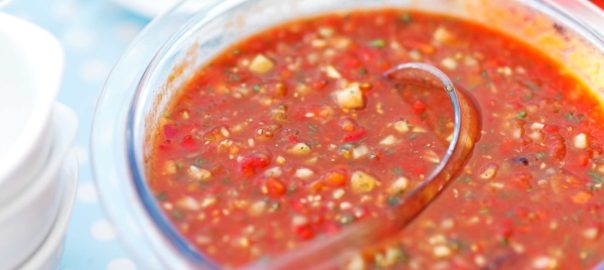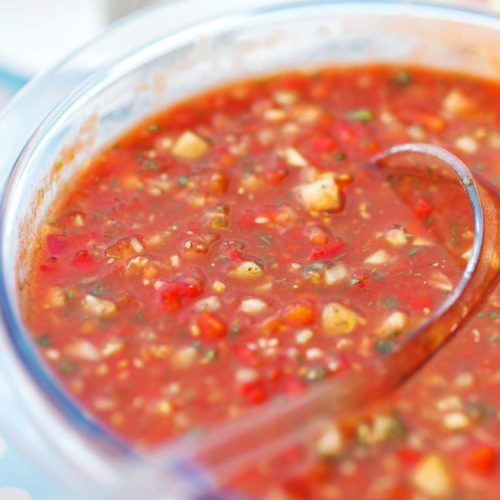Social change happens slowly. Sometimes it's difficult because the organizational mountain that is entrenched does not want to be moved. With the second season of Jamie Oliver's Food Revolution well underway we are once again seeing the challenges that many parents face trying to get better choices for their children at school. As this video from the last meeting for the National School Lunch Program shows, manufacturers and lobbyists are extremely prevalent (although not always very visible) in making school food decisions. These standards are only revised once every five years; with this highly politicized structure, our children are the ones who suffer the consequences.
A friend of mine, P.W., shared her recent frustrations with her school district, the mixed messages kids are getting, and the challenges of helping adolescents to better understand nutrition and health so that they can make better choices.
In order to protect privacy names and identifying information have been removed. These letters were edited for clarity.
P.W. wrote to her school district:
Our daughter saw “Super Size Me” today in health class at school and it really made an impression on her. Talk about NOT practicing what you teach! Good nutrition is so highly tied to academic success and yet my daughter's options for a school lunch are absolutely dreadful. Our daughter has access to multiple fried foods with a Gatorade every day. Your lunch program conditions them to a high fat, high calorie junk food diet. The lack of nutrition causes them to crave more, as well as affecting their overall development. I do not understand why the schools are able to teach the
horrors of a junk food diet and then NOT offer them a sensible lunch that will provide the nourishment they need. It grieves me to think that this may be the only decent meal some of these kids have each day and it is junk!
This is something that has bothered my husband and I since our children were in grade
school. To see this hypocrisy is more than I can take.
I am certain that you must know what a good nutritional diet really looks like. I can only assume that there are other factors that are causing the schools to fail our children this way. What do I need to do to help you fix this problem?
[In order to protect the words and privacy of the Health Teacher I am summarizing their responses]
The teacher wrote to my friend explaining that there has not been a fryer in the school kitchen for 10 years, that all hot food is either steamed or baked. The school does have a conveyor oven that gives a crisp texture without frying.
The school is not allowed to serve any product over 23 grams of fat and follow strict portion sizes.
The nutritional plan has changed to allow for higher fiber, lower sugar, lower fat foods.
Cucumber slices and green bell peppers are offered during the week, fresh fruit is available on each school line every day and beverage choices available daily are water, 100% fruit juice and low fat milk.
The teacher remarks that there is a challenge in providing healthy menu choices that the kids will want to eat within their budget.
P.W. was invited to research the nutritional information of the food online at the school's website. The Health Teacher also suggested that the child should be educated at home about portion sizes and healthier choices.
P.W. responded:
It is encouraging that our daughter is learning about better nutrition,
recognizes the value of fresh produce and is making an effort to make better
choices. I appreciate her having access to fresh fruits and vegetables
at school. It is also somewhat comforting that you are limiting the amount
of fat and using a cooking process that avoids frying. However when I researched
the menus and nutritional information on the Parent Access site, the hot
meals are all basically junk food and do not have much variety.
I sympathize
with your challenge of balancing a budget with high product and labor costs,
but I believe that we should offer a better and more varied menu and it can
be done without breaking the budget. My concern is that the junk food
offered daily, even though it is a “healthier” variety of junk food, clearly
needs to be a small percentage of our diet and yet it is the majority of
what is offered. Although you are making an effort to serve lower
fat/higher fiber items, they still have the appearance, taste and texture of
high fat. I don't see that they have much access to a home-style hot meal
that isn't highly processed or available on a daily basis.
From the menu, it
doesn't appear that much is made from scratch, much less from local products
and it largely looks to be heat and eat. Preservatives and chemicals are just
as much an issue as the empty calories of fast food. From what I hear,
much of the fruit offered is not fresh either, which translates into a much
lower nutritional product. I also don't understand why our kids are only
offered 1% and skim milk, when whole milk would be a better choice for most.
Adding a full fat live yogurt to the menu would be a great addition, as well
as seasonal melons, berries, grapes, and citrus.
The other issue I have is that my daughter is on 4th lunch. This means that by
the time she gets to have lunch, the cafeteria is out of certain things,
others are over cooked or burned, or the lines are so long that time
prohibits her from even eating some days. This cannot be considered acceptable.
In this age group, peer pressure and the school
experience trumps whatever is being taught at home. It is a huge challenge
for us to feed our kids well at home when their taste buds become conditioned to a fast food diet when attending school. Years ago, I had the
privilege of being in a school kitchen that prepared food and distributed it
to all the area schools. This district must be large enough to be able to support
such a venture and be able to better utilize seasonal and local products, as well as to create a fresh high quality meal for our kids and staff. You have an
enormous responsibility to our kids and I respect your challenges and
appreciate your response, but I can't say that it provides me the assurances
I was looking for and hope that a new approach is being considered.
P.W. Wrote me privately and shared:
Another thing that really upsets me is that when I was in school, there was a wash basin for the kids to wash their hands when entering the cafeteria. None of the schools here have that and supposedly, the teachers are taking the kids by the bathroom to wash up before lunch, but I don’t believe it. They have staph and other contagious diseases running rampant all the time and good hygiene is essential. There should be a state law that requires hand washing before meals in schools.
My take on all of this:
I frequently find myself very frustrated by school districts serving fatty, sugary, nutritionally deficient foods and then claiming that it is the parent's responsibility to teach their children to eat better and make better choices. Many families that I know do teach their children these things and do provide much better choices at home. However in the school environment there are not too many children who are going to choose from the highly limited often not-really-that-healthy option over french fries and pizza. I believe the school has ice cream and cookies and fast food options because those are the more profitable items.
I know several children who are vegetarians and have heard disturbing stories of the distasteful looking or even empty salad bars that the cafeteria staff refused to replace or refill leaving that child with no viable option.
Earlier in the year I had the opportunity to speak with my local Great Harvest Bread company. They had received an opportunity to bring whole grain bread, preservative free sandwiches into the school system. However after a short period of time their contract was reduced to four schools and cut back in the number of days that they were allowed to provide. They believe part of the reason for this reduction was because the school wanted to bring in Chick-Fil-A more times per day as that was a more profitable option for the school district. Great Harvest was not allowed to send notes home to parents letting them know that this healthier sandwich option was available.
I believe it is an unfortunate truism that most children, even those who have received more nutritional education at home, will opt for high fat, high sugar foods because they are enticing. By having an overabundance of these products the school virtually guarantees that they can feed children the least nutritious, cheapest foods and make large profits.
In defense of the school system I do agree that they have a difficult job trying to feed as many children as they need to with the minimal federal dollars allowed. However this should not be an excuse to allow Pizza Hut, McDonalds and Chick-Fil-A lines in a school cafeteria.
I believe another part of the problem is that school districts simply do not want parents to be involved in the decision making or to have input into the nutrition served at the cafeteria. School lunches have become a profit center, if not for the school then at least for the food service corporations. Moves such as this one in Chicago disallowing lunches to be brought from home make me highly suspicious of the intent. I believe, unfortunately, that many schools are marketing to a captive audience and can therefore preach one thing and do another.
I applaud P.W. and many others like her all around the country who are rallying on behalf of the kids. Change is happening all across the country. From the Edible Schoolyard to the Renegade Lunch Lady, Two Angry Moms, Better School Food, Local Food Dude and more, we need to push for the children to have decent nutrition and take back our cafeterias.


